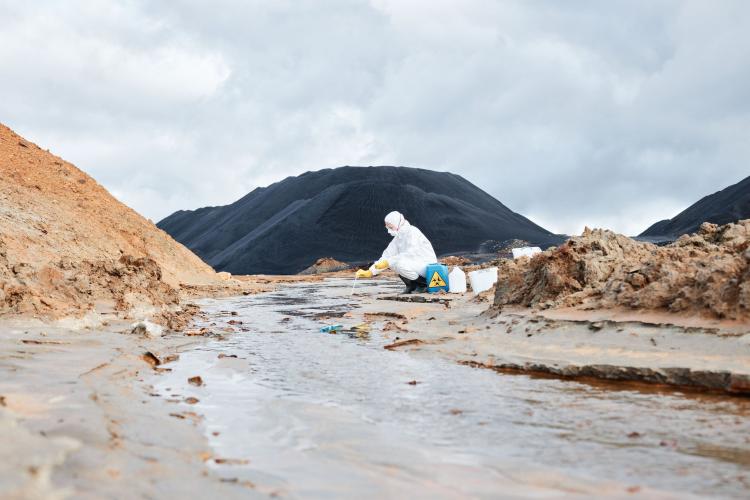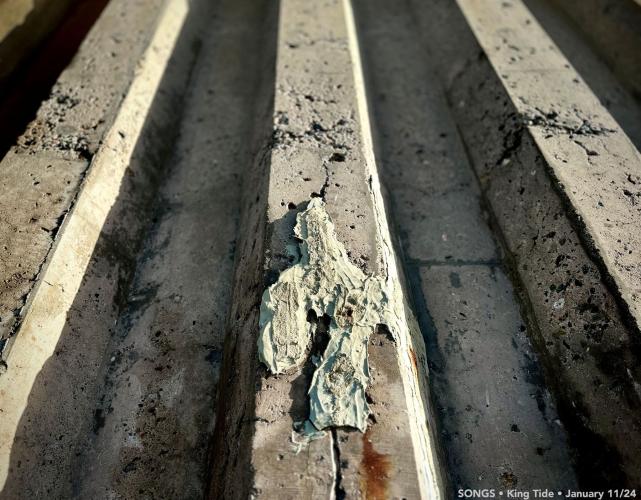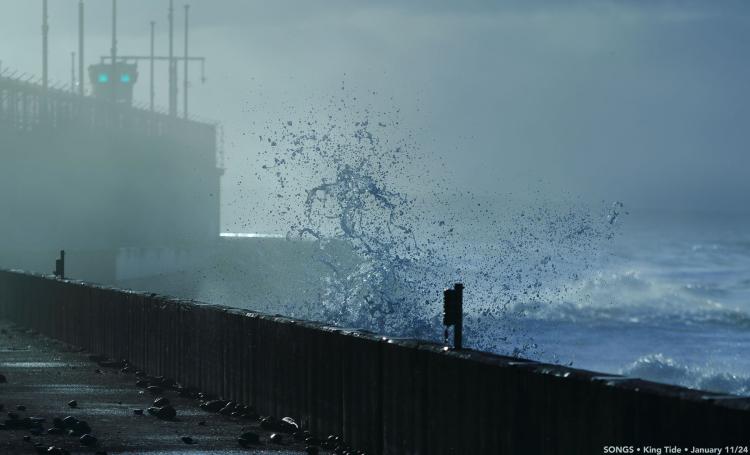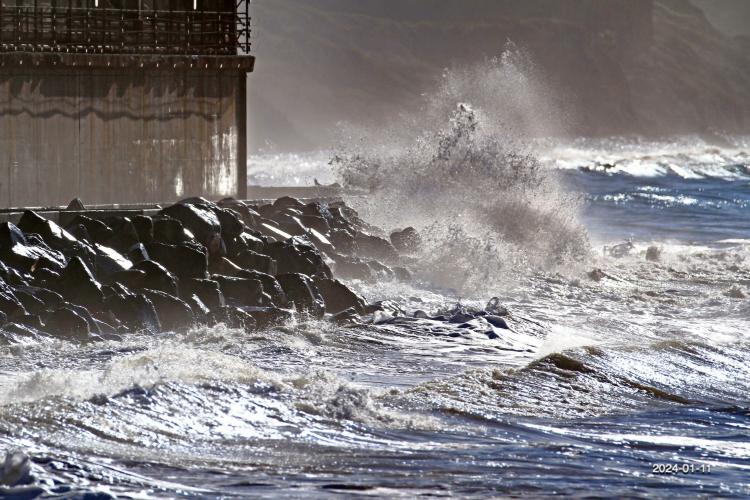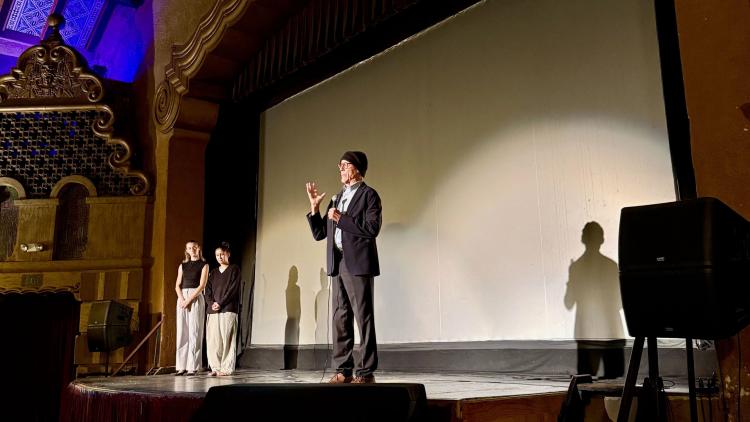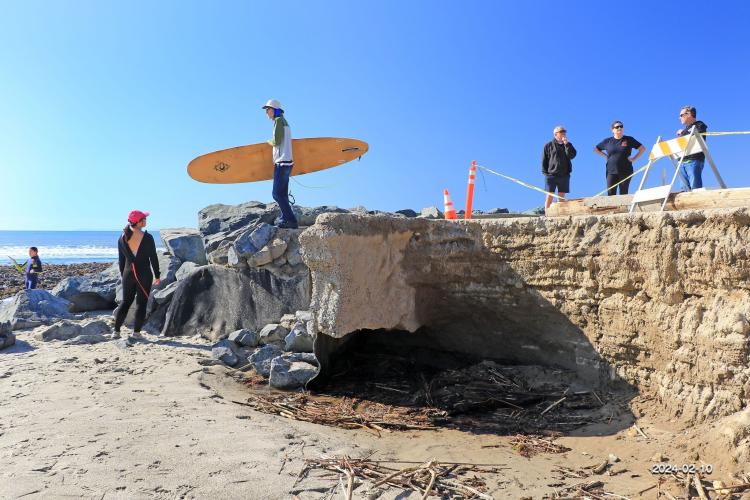
The beach near the SONGS (San Onofre Nuclear Generating Station) power
Morgan St. Onge
The beach near the SONGS (San Onofre Nuclear Generating Station) power plant in California is called San Onofre State Beach. It's a popular state beach adjacent to the former nuclear power plant.
The Trump administration is fast-tracking the construction of nuclear reactors by promoting centers for nuclear recycling, according to Evan Halpert of the Washington Post. The Trump administration, working in concert with a company called Oklo, is preparing to build an “advanced fuel center” building on the same site “where uranium was enriched for the Manhattan project more than 80 [sic] years ago.” Oklo is investing $1.7 billion, according to an announcement by the company earlier this month.
Oklo and its competitors present the implementation of these plants as a clean and safe endeavor. According to Halper’s reporting, Oklo’s summation is simple: Waste from the reactor is converted into fuel, and the hassle of spent-fuel stockpiles disappears overnight. If you are to believe Oklo’s claims, explains Halper, “a small amount of unusable radioactive material is safely buried, perhaps in compact canisters tubed thousands of feet into the Earth’s crust,” and that’s the end of it.
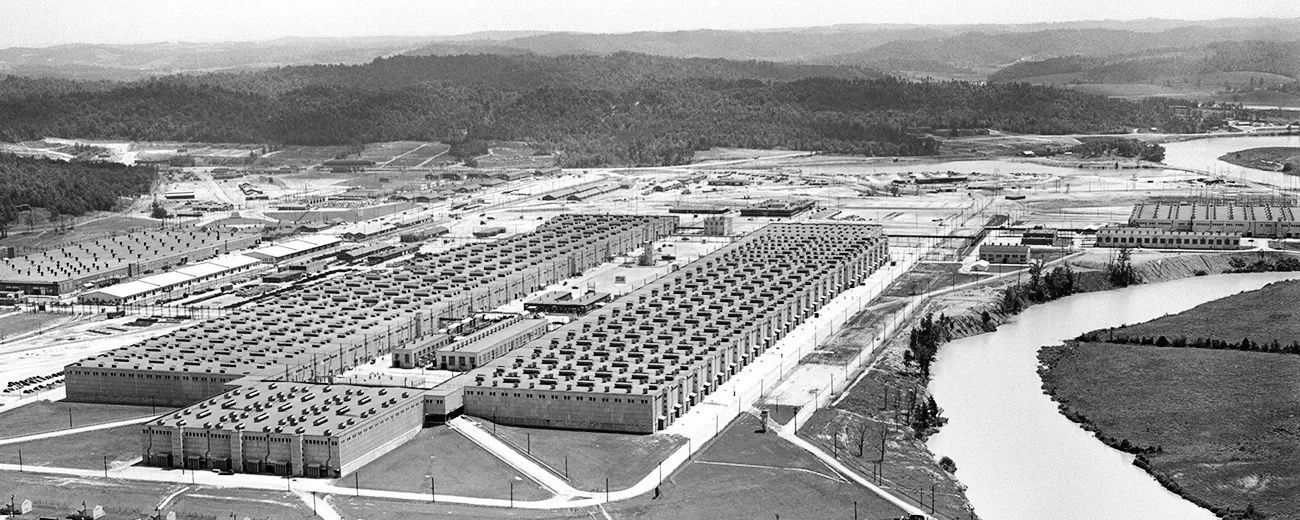
An aerial view of the K-25 Gaseous Diffusion Plant at Oak Ridge.
US Department of Energy
An aerial view of the K-25 gaseous diffusion plant circa 1945. At the time, it was the largest building in the world.

An aerial view of the K-25 Gaseous Diffusion Plant at Oak Ridge.
US Department of Energy
An aerial view of the K-25 gaseous diffusion plant circa 1945. At the time, it was the largest building in the world.
Industry professionals are largely opposed to the administration’s plans. According to Halpert, “they [nonproliferation groups and prominent nuclear scholars] say that neither Oklo nor the administration have shared the science backing the claim that recycling the fuel at commercial scale using current industry techniques is safe or practical.”
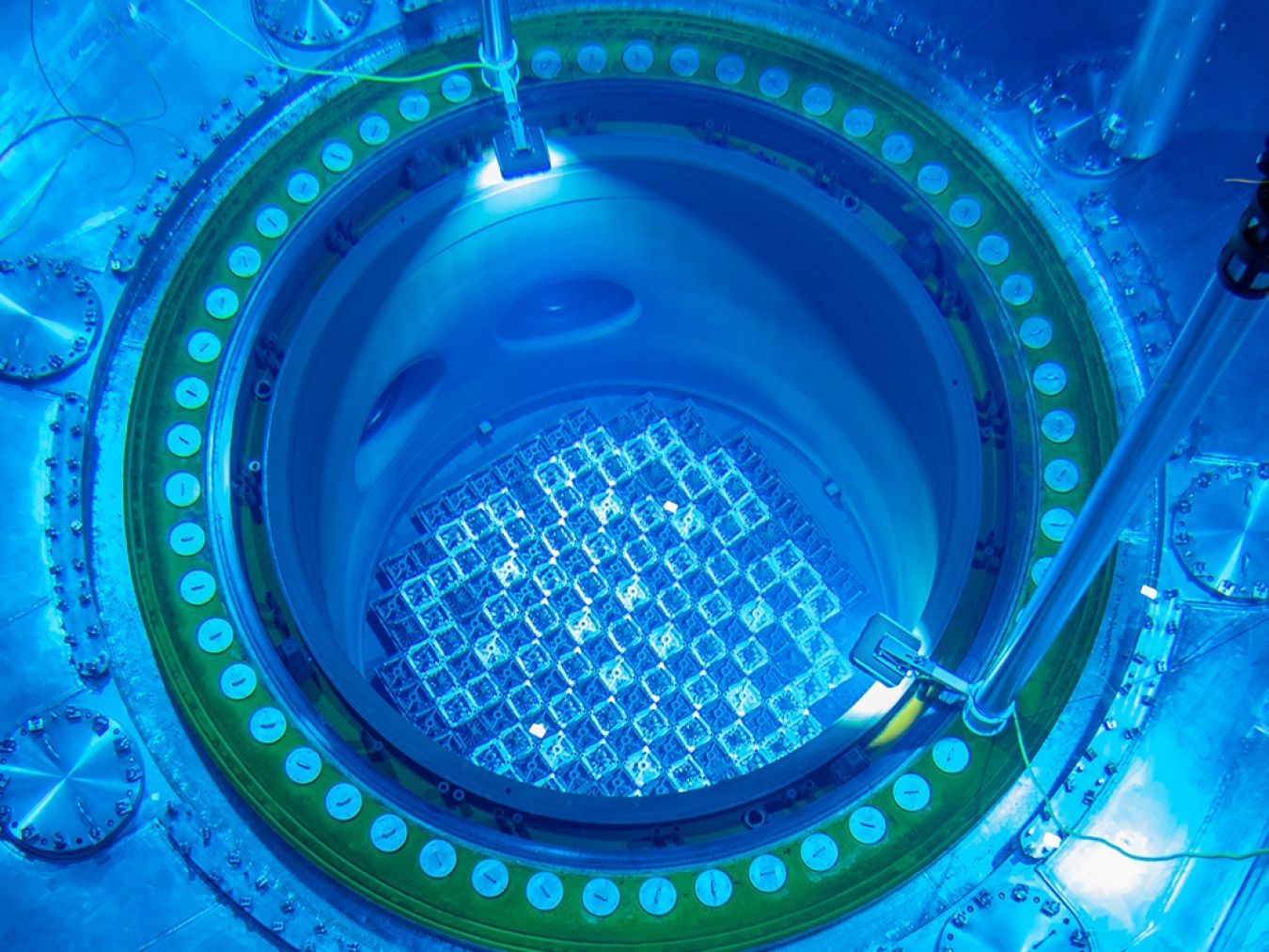
Fuel-filled core of Vogtle Unit 2.
Southern Nuclear
An aerial perspective of the Southern Nuclear Operating Company's fuel-loaded Vogtle Unit 2 in Waynesboro, GA.

Fuel-filled core of Vogtle Unit 2.
Southern Nuclear
An aerial perspective of the Southern Nuclear Operating Company's fuel-loaded Vogtle Unit 2 in Waynesboro, GA.
Ross Matzkin-Bridger, a former senior adviser at the Energy Department during the Biden administration and now Senior Director at the Nuclear Threat Initiative non-profit, remarks that “these are the same technologies that were developed and rejected decades ago,” Halpert reports. According to Matzkin-Bridger, “the only thing new is misleading narratives that they [Oklo and the Trump administration] have solved the safety, security and waste-management issues that make these technologies unworkable.” If the technology were workable, ninety thousand metric tons of idle spent-fuel stockpiles across the United States could be recycled.
To combat this problem, according to Halpert's reporting, President Trump instructed members of his cabinet to “utilize all legal authorities” to implement the large-scale recycling of nuclear waste, as outlined in an executive order issued in May. The administration’s stated goal is to quadruple the current nuclear power in the U.S.
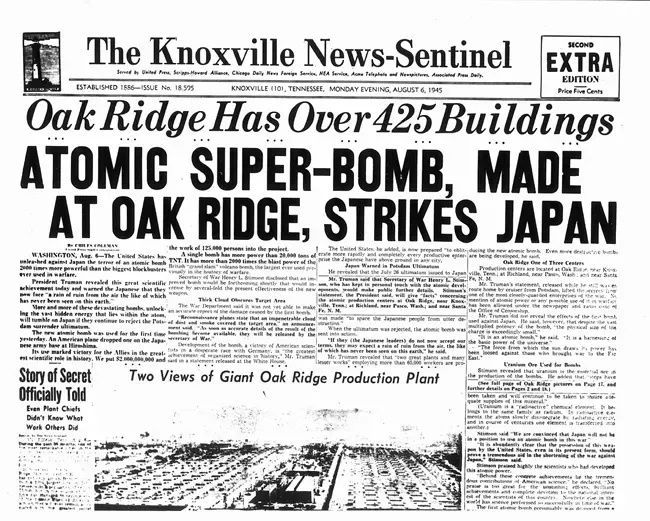
Front-page of Knoxville News-Sentinel on August 6th, 1945
U.S. Department of Energy
A newspaper article detailing the location where 'Little Boy' and 'Fat Man' were developed before they were deployed to Hiroshima and Nagasaki, respectively.

Front-page of Knoxville News-Sentinel on August 6th, 1945
U.S. Department of Energy
A newspaper article detailing the location where 'Little Boy' and 'Fat Man' were developed before they were deployed to Hiroshima and Nagasaki, respectively.
Oklo uses a technique called “pyroprocessing.” According to Halpert’s article, pyroprocessing, first developed in the 1960s, was held back in post-development due to two primary concerns: high costs and “the risks that the process would create weapons-grade materials,” which could then be utilized commercially. Oklo CEO Jacob Dewitte argues that the purity threshold for the recycling process has decreased with the advancement of nuclear reactors themselves. Dewitte claims that new regulations render weapons production nearly impossible, although critics cite a lack of research backing the CEO’s claim.
According to Halpert, Dewitte cites the use of acid, as opposed to Oklo's process, which uses molten salt, as the reason earlier attempts at commercial success have failed. As it stands, neither the U.S. nor the U.K. has the advanced nuclear reactors that Oklo hopes to build. Halpert reports that "only Russia and China have such commercial 'generation IV' reactors, at deeply subsidized demonstration plants." Oklo plans to have the first "commercially viable reactor" built by late 2027, at the Idaho National Laboratory.

Signage at the Oak Ridge nuclear facility.
US Department of Energy
A sign outside the facilities at Oak Ridge depicts the 'Three Wise Monkeys' and Uncle Sam, warning workers and residents to remain quiet about the goings-on at Oak Ridge.

Signage at the Oak Ridge nuclear facility.
US Department of Energy
A sign outside the facilities at Oak Ridge depicts the 'Three Wise Monkeys' and Uncle Sam, warning workers and residents to remain quiet about the goings-on at Oak Ridge.
Ernest Moniz, an MIT physicist and former energy secretary, explains in Halpert's words that the "administration's push to recycle plutonium from dismantled warheads is particularly worrisome." His concerns are that the administration's efforts will create material usable in the production of weapons both at home and abroad, will inflate the price of nuclear power, and pose an elevated risk of radioactive incidents. Moniz emphasizes that "none of these concerns have been addressed convincingly by new technology," per Halpert's article.
Halpert tells us that, despite warnings from experts in the field, companies with a stake in nuclear recycling "have launched a public relations blitz to convince lawmakers and the public that those risks are obsolete." Bradley Williams, the lead for energy policy at the Idaho National Laboratory, says that "fuel availability and energy security are the new national security interest and our focus in light of [competition with] Russia and China," per Halpert. In defense of seemingly risky ventures into nuclear recycling, Williams, in Halpert's article, points out that the world's primary concern right now is "keeping the lights on, and they’ll use whatever fuel they can get, and we might need to use every fuel we can get."
The administration argues that the perfection of this technology is crucial to solving the nuclear waste problem. "Recycling can’t turn all of the waste into fuel. The small amount left at the end of the process is highly radioactive and challenging to dispose of," said Halpert. According to Halpert, companies like Oklo and their competitors have begun exploring the use of deep borehole technology as a potential solution.
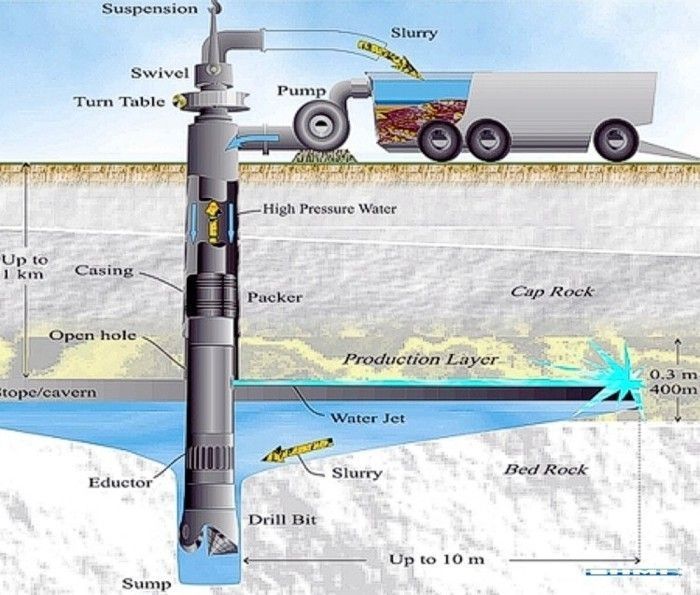
Borehole Miming Tool and Technology Principle Schematic
BHMI - Borehole Mining International, Inc.
A schematic depicting deep borehole drilling technology.

Borehole Miming Tool and Technology Principle Schematic
BHMI - Borehole Mining International, Inc.
A schematic depicting deep borehole drilling technology.
Halpert noted that:
"Rep. Chuck Fleischmann, a Republican from Tennessee who co-chairs the House Nuclear Cleanup Caucus [alongside U.S. Rep. Susie Lee (D-Nev)], said Oklo is just one of several recycling outfits looking to locate in his district, and he welcomes the interest."
Fleischmann believes that the deep-bore technology proposed by companies like Oklo doesn't carry significant risk. The representative from Tennessee isn't alone. The Representative from Tennessee isn't alone. Halpert states that "Utah's Office of Energy Development declared in a report that 'the risks of recycling are primarily political in nature, all technical risks can and already are being navigated safely around the world.'"
According to Halpert's reporting, Utah State Senator David P. Hinkins (R-Utah) told an Oklo competitor's CEO, "You're welcome here," after the CEO's presentation at a legislative hearing in the Fall of 2024.
